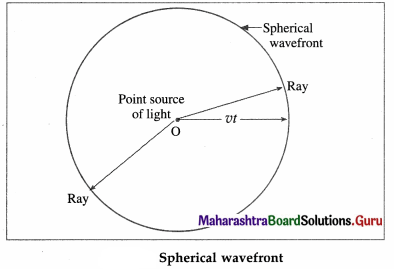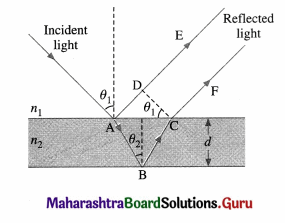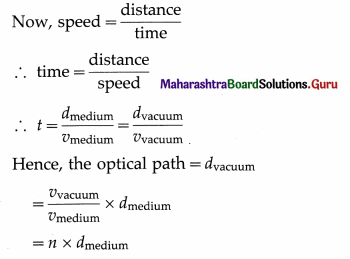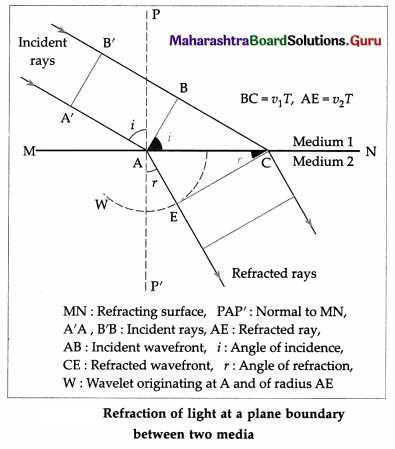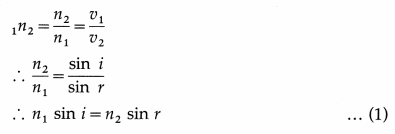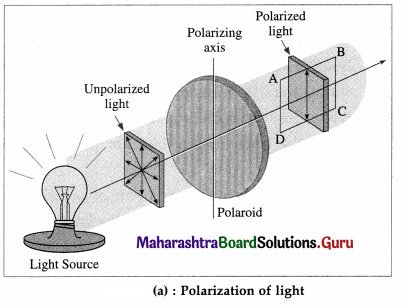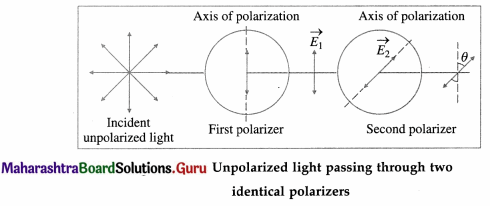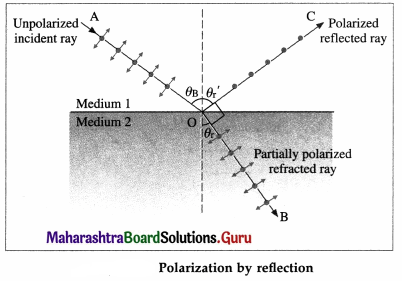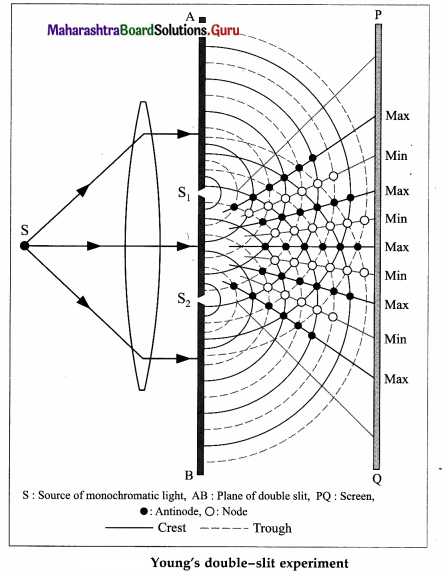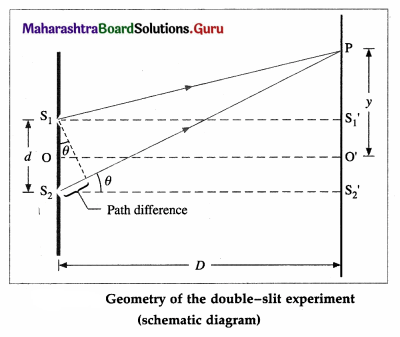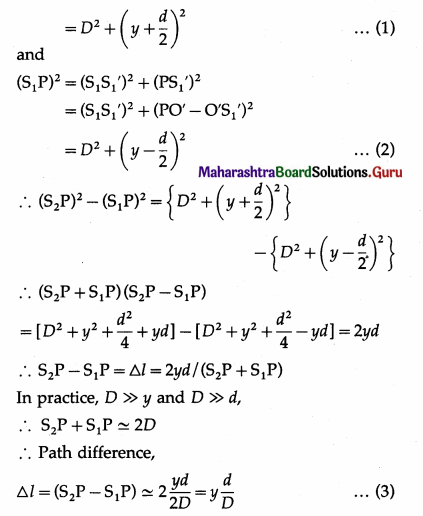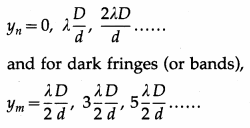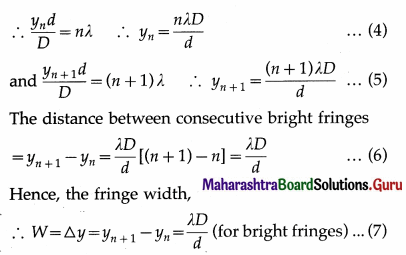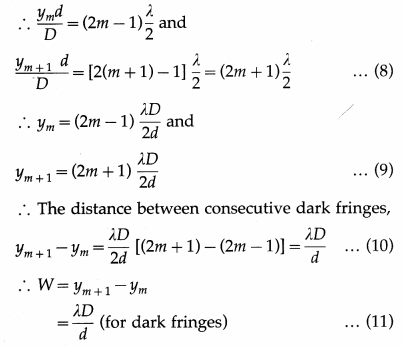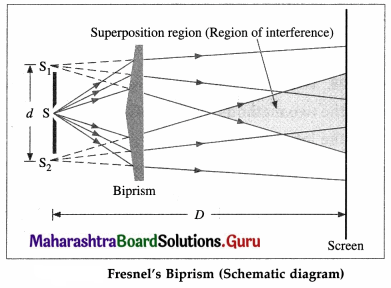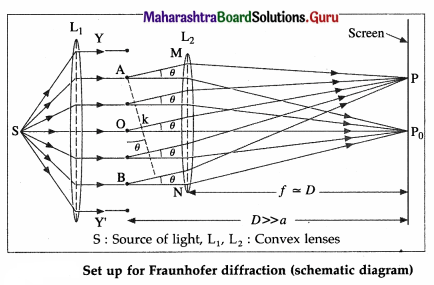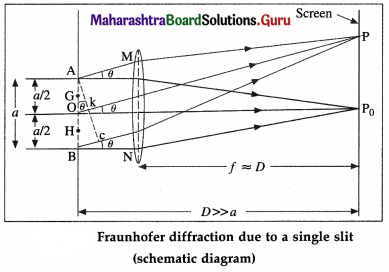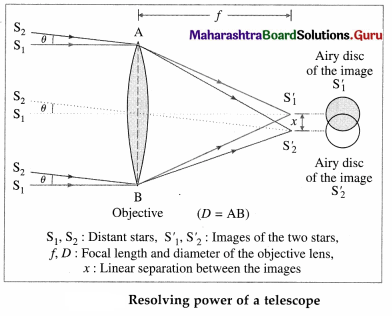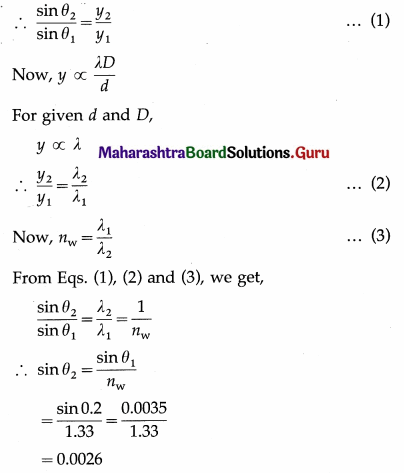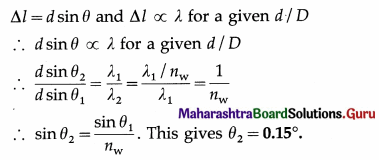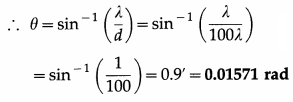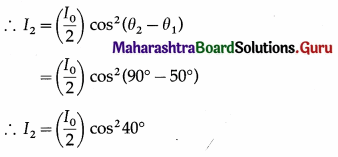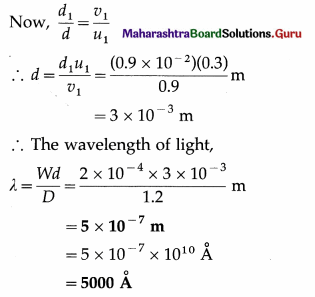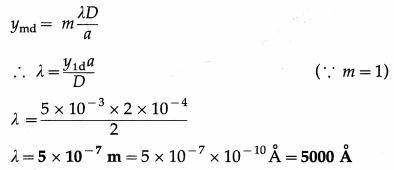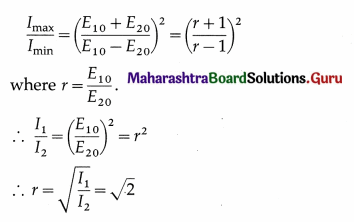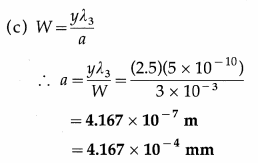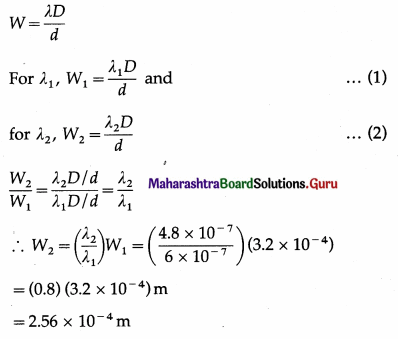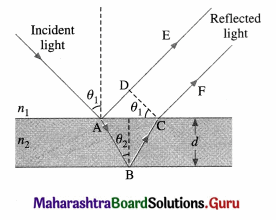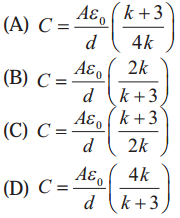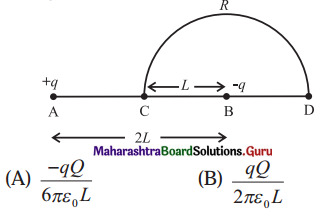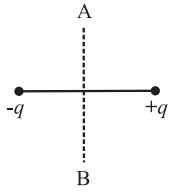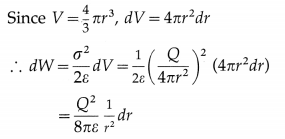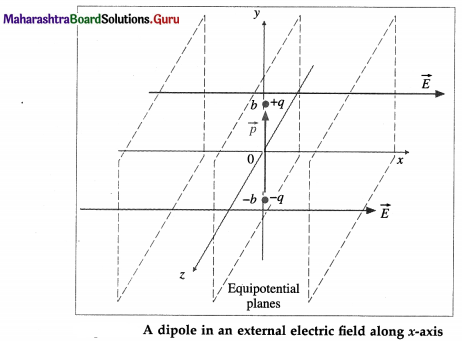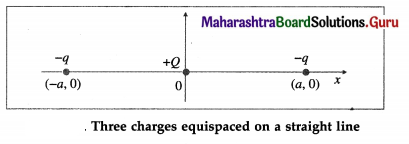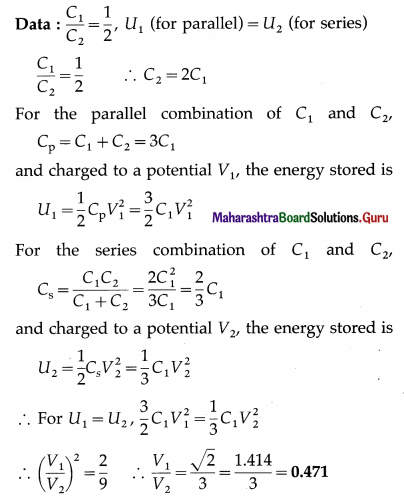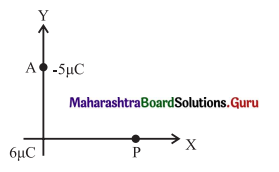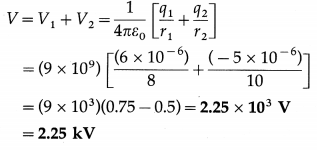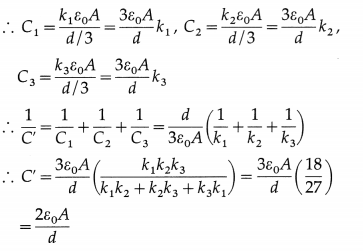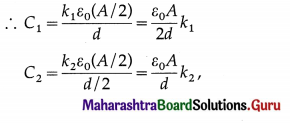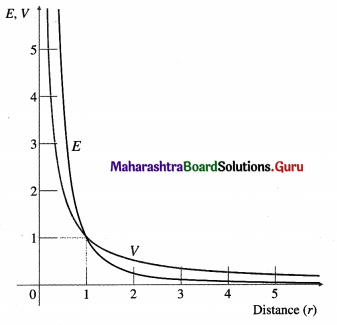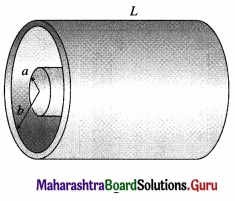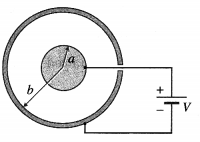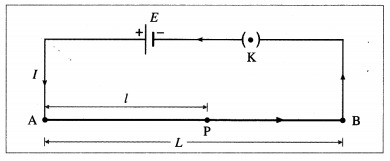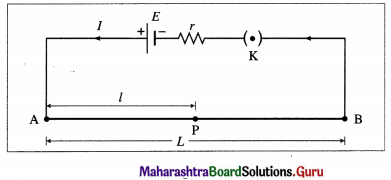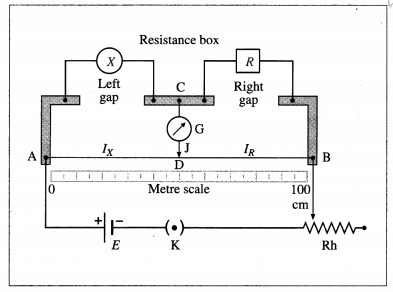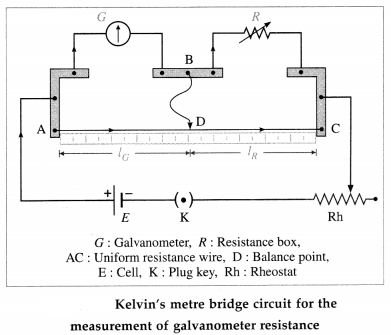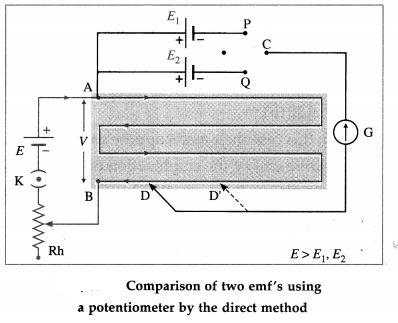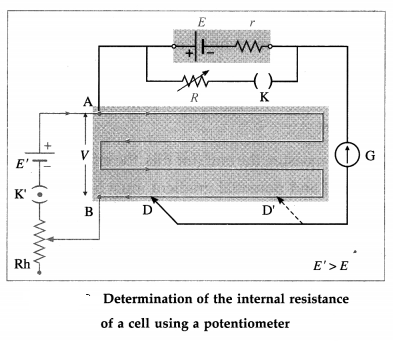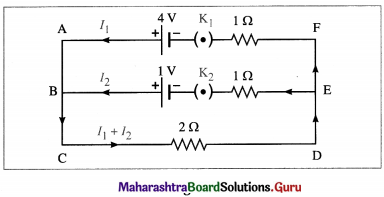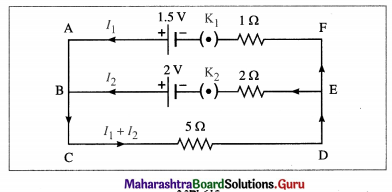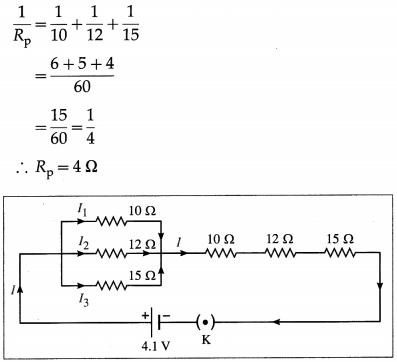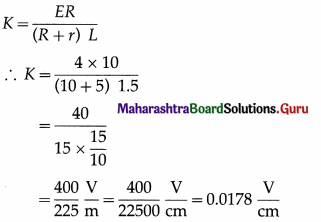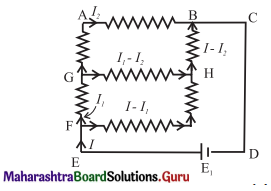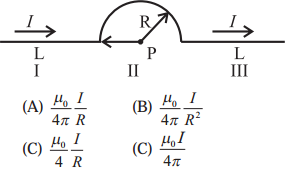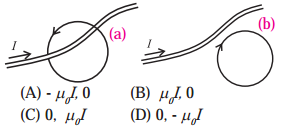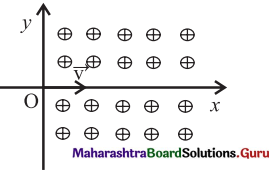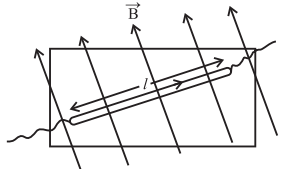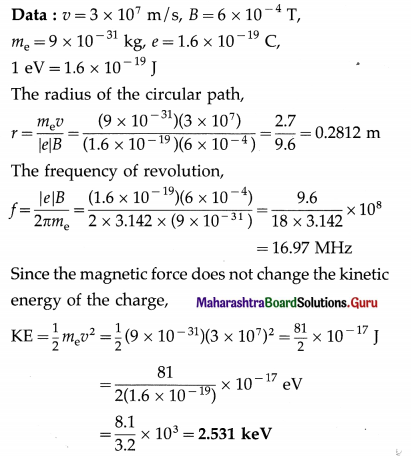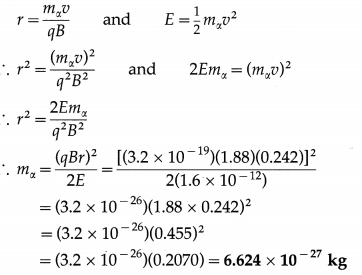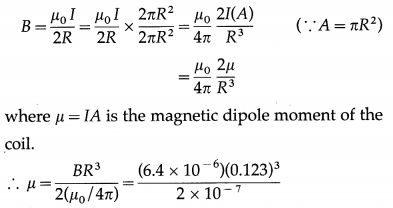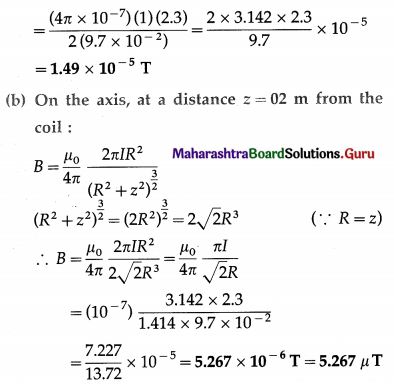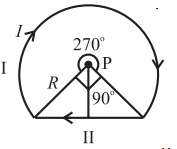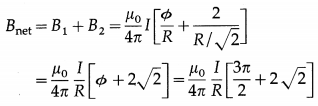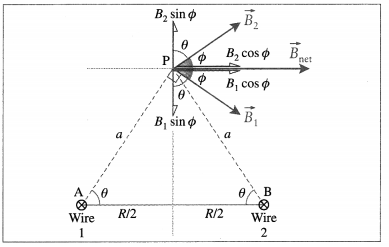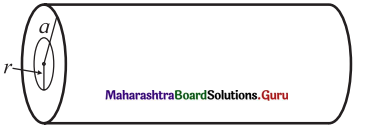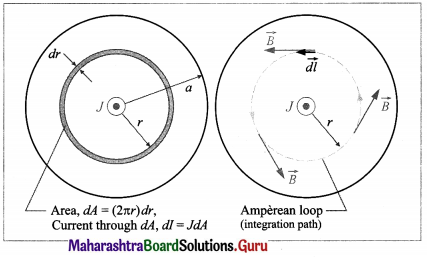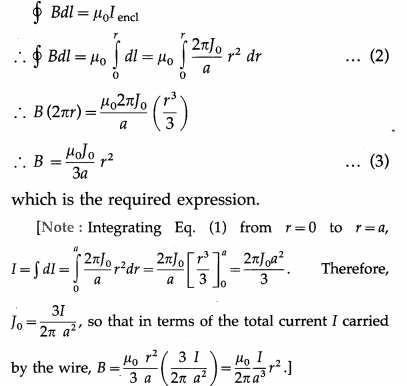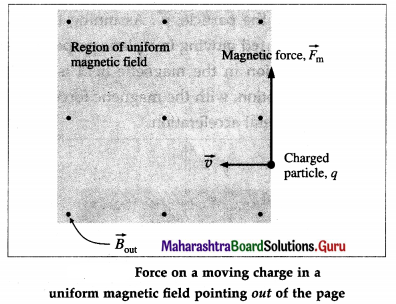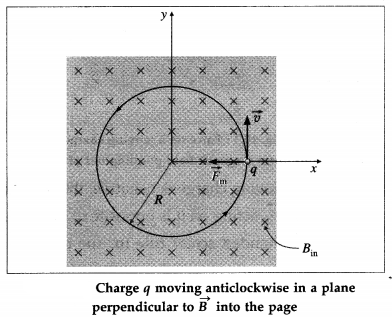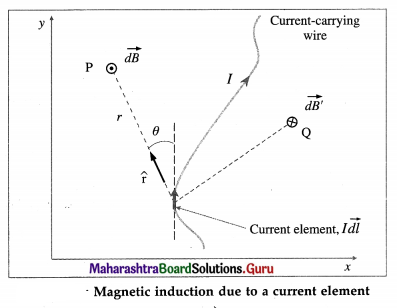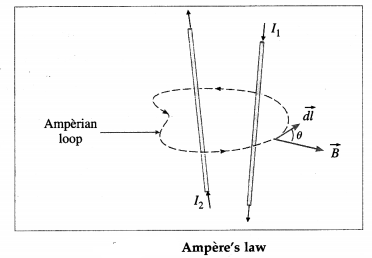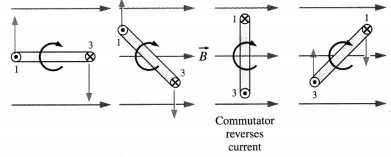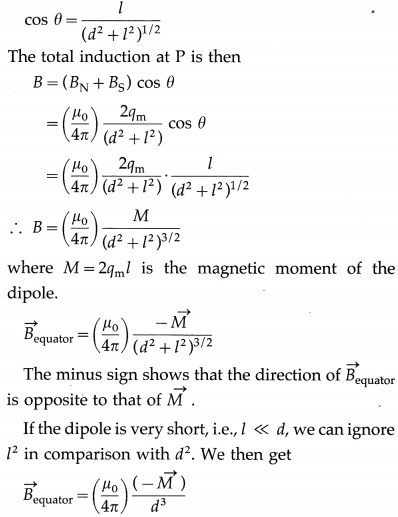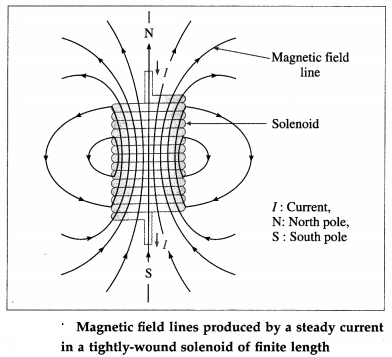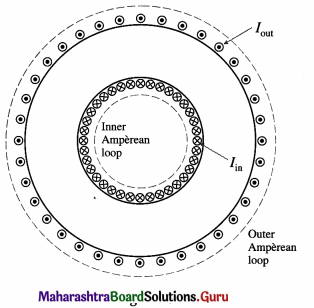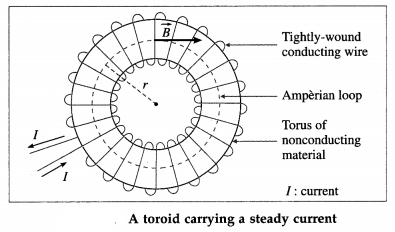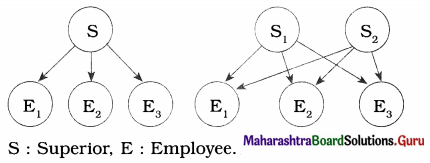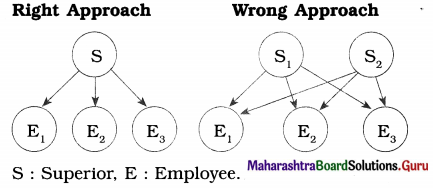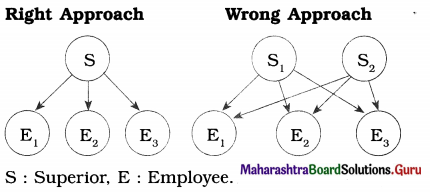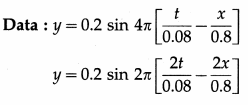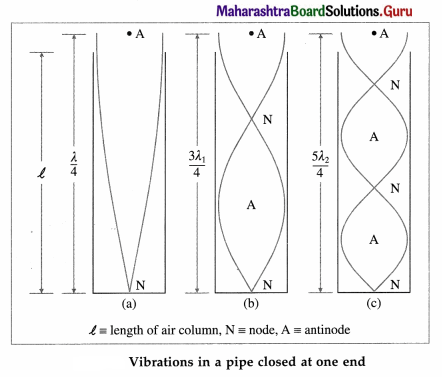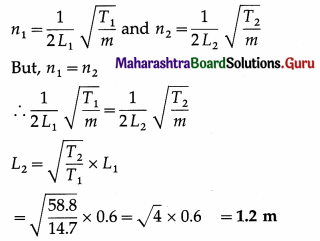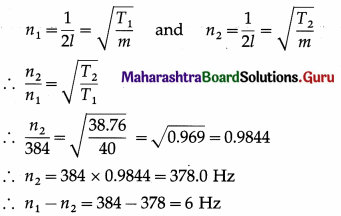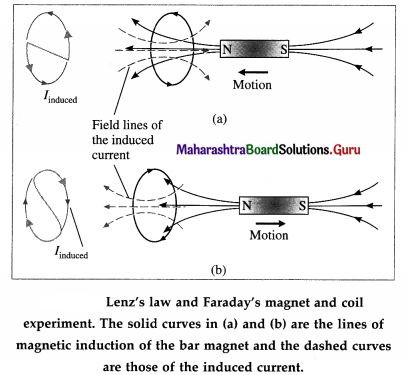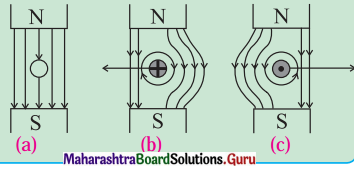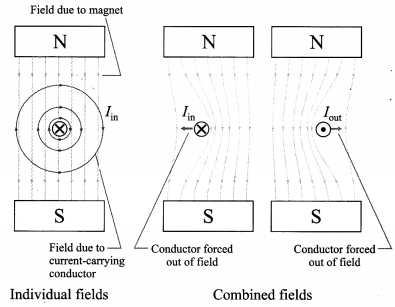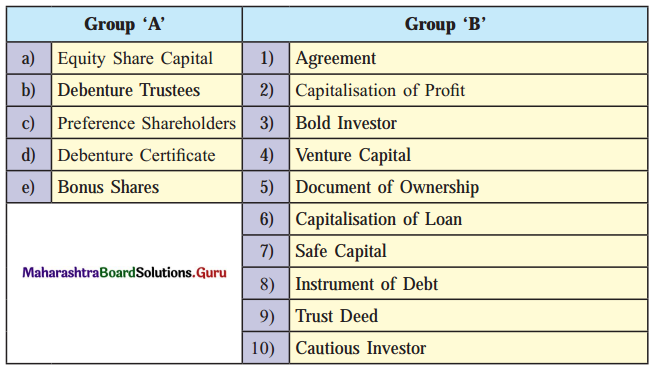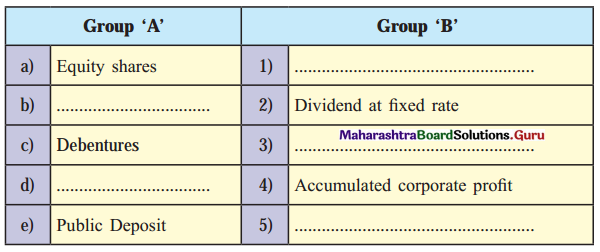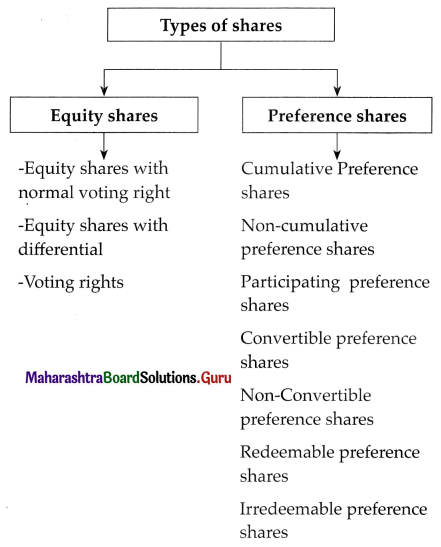Balbharti Maharashtra State Board Organisation of Commerce and Management 12th Textbook Solutions Chapter 3 Entrepreneurship Development Textbook Exercise Questions and Answers.
Maharashtra State Board 12th Organisation of Commerce and Management Solutions Chapter 3 Entrepreneurship Development
1. (A) Select the correct options and rewrite the sentences
Question 1.
The word ‘entrepreneur’ is derived from the ……………… word ‘entreprende’.
(a) Japanese
(b) English
(c) French
Answer:
(c) French
Question 2.
‘Entreprende’ means to ………………..
(a) Undertake
(b) Enterprise
(c) Businessman
Answer:
(a) Undertake
![]()
Question 3.
Start Up India is an initiative of the ………………
(a) RBI
(b) Government of India
(c) World Bank
Answer:
(b) Government of India
Question 4.
………………. is the idea of bringing urban residents to rural areas, by empowering to local communities, both socially and economically.
(a) Agro tourism
(b) Medical tourism
(c) Entertainment
Answer:
(a) Agro tourism
1. (B) Match the pairs
| Group A | Group B |
| (A) Gap filling function | (1) 2016 |
| (B) Entrepreneur | (2) Employment |
| (C) Agro tourism | (3) Old methods of production |
| (D) Technology | (4) 2019 |
| (E) Start up India | (5) Self motivated |
| (6) Rural tourism | |
| (7) Entrepreneurship | |
| (8) Latest knowledge | |
| (9) Necessity Based | |
| (10) Medical tourism |
Answer:
| Group A | Group B |
| (A) Gap filling function | (7) Entrepreneurship |
| (B) Entrepreneur | (5) Self motivated |
| (C) Agro tourism | (6) Rural tourism |
| (D) Technology | (8) Latest knowledge |
| (E) Start up India | (1) 2016 |
1. (C) Give one word/phrase/term which can substitute each one of the following
Question 1.
An undertaking or adventure involving uncertainty and risk and requiring innovation.
Answer:
Enterprise
Question 2.
A function of creating something new for an economic activity.
Answer:
Innovation
Question 3.
A person who is an innovator who introduces new combinations of means of production.
Answer:
Entrepreneur
Question 4.
The process of enhancing entrepreneurial skills and knowledge through structured training and institution building programmes.
Answer:
Entrepreneur development
Question 5.
The process that motivates a person into action and induces him to continue the course of action for the achievement of goals.
Answer:
Motivation
![]()
Question 6.
An employee who has an authority and support of the organisation to implement his creative ideas.
Answer:
Intrapreneur
1. (D) State true or false
Question 1.
An entrepreneur should not be ready to work hard.
Answer:
False
Question 2.
Agritourism can support agricultural economy.
Answer:
True
Question 3.
Successful businessman takes calculated risk.
Answer:
True
Question 4.
Entrepreneurship is a full time job which requires dedication and hard work.
Answer:
True
Question 5.
Startup India is an initiative of the Government of France.
Answer:
False.
1. (E) Find the odd one
Question 1.
Communicator, Innovator, Self-starter, Inactive.
Answer:
Inactive
Question 2.
Trekking, Wildlife study, Horseback riding, Indoor games.
Answer:
Indoor games
Question 3.
Innovation, Lack of communication, Development of market, Determining the objectives.
Answer:
Lack of communication.
1. (F) Complete the sentences
Question 1.
An entrepreneur is a person who starts a …………………
Answer:
Business / Enterprise
Question 2.
‘Start-up’ India initiative was launched in ……………….
Answer:
2016.
1. (G) Select the correct option
(Innovation, Niche tourism, Agro tourism, Entrepreneurship)
| Group A | Group B | |
| 1. | The idea of bringing Urban resident to agricultural farm | ————— |
| 2. | Agro tourism is a form of | ————– |
| 3. | —————— | To introduce new combination of products and features |
| 4. | —————– | A full time job which requires, dedication and hard-work. |
Answer:
| Group A | Group B | |
| 1. | The idea of bringing Urban resident to agricultural farm | Agro tourism |
| 2. | Agro tourism is a form of | Niche tourism |
| 3. | Innovation | To introduce new combination of products and features |
| 4. | Entrepreneurship. | A full time job which requires, dedication and hard-work. |
1. (H) Answer in one sentence
Question 1.
What is Agro tourism?
Answer:
Agro tourism is the idea to bring urban residents to rural areas for leisure travel and spending.
Question 2.
Who is ‘Entrepreneur’?
Answer:
Entrepreneur is a person who organises and operates a business or businesses, taking on greater than normal financial risks in order to do so.
![]()
Question 3.
Who described ‘Entrepreneurship’ as the founding of a private enterprise?
Answer:
John Sturt Mill, a famous economist, described ‘Entrepreneurship’ as founding of a private enterprise in 1948.
1. (I) Correct the underlined word and rewrite the sentences
Question 1.
The word ‘Entrepreneur’ comes from the German verb entreprendre, it means ‘to undertake’.
Answer:
French
Question 2.
Entrepreneurs try to make home a better place where the needs of consumers can be satisfied.
Answer:
market
Question 3.
The loan taken under stand-up India scheme is repayable in ten years.
Answer:
seven.
2. Explain the following term/concept
Question 1.
Entrepreneur.
Answer:
An entrepreneur is a person who starts a business and is willing to risk loss in order to make money. The entrepreneurs are passionate to invent, innovate, lead or pioneers with a disruptive product or technology. Entrepreneurs try to make market a better place where the needs of consumers can be satisfied. They have the courage to offer and share an idea or a product or a service with the world. A small businessman, founder of multi-billion company, freelancing carpenter are examples of entrepreneurs.
Question 2.
Agro tourism.
Answer:
Agro tourism is the idea of bringing urban residents to rural areas for leisure travel and spending. Agro tourism is a commercial enterprise at a working farm, ranch or agricultural plant conducted for the enjoyment of visitors that generates supplement income for the owner. Agrotourism activities include picking fruits, tending bees, milking cows and other educational pursuits. In short, Agro tourism provides the tourists a chance to reconnect with the land and provides a ‘hand on experience’ with local foods. Agro tourism can support agricultural economy when local producers can no longer complete economically.
Question 3.
Start-ups.
Answer:
A start-up is defined as an entity having its headquarter in India, which was opened less than 10 years ago and has an annual turnover of less than Rs 100 crores. It is an initiative of the Government of India, launched in 2016. It aims at building an ecosystem which will nurture start¬ups in the country. So that, sustainable economic growth and large scale employment opportunities can be generated. One of the objectives of the Indian Government is to make India a nation of job creator instead of job seekers.
![]()
Question 4.
Stand-ups.
Answer:
Stand-up India scheme is for financing SC/ST and/or women entrepreneurs. The objective of the stand-up India scheme is to facilitate bank loans between Rs 10 lakh and Rs 1 crore to at least one SC or ST borrower and at least one woman borrower per branch for setting up a greenfield enterprise. This enterprise maybe in manufacturing, services or the trading sector. In case of non-individual enterprise at least 51% of the share-holding and controlling stake should be held by either an SC/ST or woman, above 18 years of age.
Question 5.
Intrapreneur.
Answer:
Intrapreneurship is the entrepreneurship within an existing organisation. An intrapreneur is an employee who has the authority and support of his company/employer to implement his own innovative and creative ideas. His idea or products may or may not earn immediate revenue for the company. But the employee keeps receiving his salary. The company provides the infrastructure. Many large organisations have dedicated Research and Development Departments where employees are encouraged to use their creative abilities. These ideas or innovations may earn handsome profit to an organisation. So Intrapreneur is the entrepreneurship within an organisation.
3. Study the following case /situation and express your opinion
Mr. Soham is a young MBA degree holder, Mr. Navin is B.Com graduate. Mr. Soham is willing to start dairy farm at his village, Mr. Navin is willing to work as cashier in Private Company.
(i) Find out dream of Soham and Navin.
(ii) State anyone feature of Entrepreneur.
(iii) To become successful entrepreneur, which qualities Mr. Soham should have?
Answer:
(i) Dream of Soham is to become ; entrepreneur and dream of Navin is to take up job in a private company and get a fixed income as salary.
(ii) Entrepreneur is a person who is willing to take risk in order to earn money and start a business.
(iii) To become a successful entrepreneur Mr. Soham should have qualities like innovator, creator, reactive and risk bearer.
4. Answer in brief
Question 1.
Define Entrepreneur. Explain functions of entrepreneur.
Answer:
[A] Definition : According to Webster dictionary, “An entrepreneur is a person who starts a business and is willing to risk loss in order to make money.” The entrepreneurs are passionate to innovate, lend, invent or pioneer with a disruptive product or technology. A small businessman, a plumber or a founder of huge company are entrepreneurs.
[B] Functions : The functions of an entrepreneur are:
(1) Innovation : Usually, an entrepreneur has an innovative mind. He introduces new combination of means of production. He introduces something new or something different that would give his business a competitive advantage. Innovation sometimes involves problem solving and entrepreneur gets pleasure by using his talents to solve those problems.
(2) Determination of objectives : An entrepreneur is required to decide the aims and objectives of the business enterprise he intends to establish. He has to change those aims and ; objectives as per changing conditions or accept those which are beneficial to the enterprise as per the market situation.
(3) Development of market: An entrepreneur has to find new, different and innovative ways to market his products and services. As the markets are developing constantly, he has to conduct surveys, research to understand customer’s demand.
(4) New technology : Entrepreneur has to install new, advanced and efficient technology, new machinery, new and scientific methods of production to save overall cost and to improve the methods of production.
(5) Good relations : Prosperity, growth and development of enterprise mostly depend on the cordial and efficient relations of the superiors, subordinates and all employees. In this respect, co-ordination among the employees plays a significant role to make business enterprise successful.
(6) Organising funds : Finance is required to meet working capital and fixed capital needs of business. The entrepreneur has to raise adequate financial resources to keep enterprise in living condition. For this purpose, he has to keep good relation with the existing as well as potential investors.
(7) Taking decisions : Timely, correct and wise decisions are most important to run a successful business. An entrepreneur has to evaluate pros and cons of every business decision.
![]()
Question 2.
Define entrepreneur. Explain the qualities of successful entrepreneur.
Answer:
[A] Definition : According to Webster dictionary, “An entrepreneur is a person who starts a business and is willing to risk loss in order to make money.” The entrepreneurs are passionate to innovate, lend, invent or pioneer with a disruptive product or technology. A small businessman, a plumber or a founder of huge company are entrepreneurs.
[B] The qualities of a successful entrepreneur:
(1) Discipline : An entrepreneur has comprehensive strategies and tactics to accomplish the organisational goal. Successful entrepreneur is disciplined enough to take steps every day towards the attainment of his objectives. They eliminate any hindrance or distractions.
(2) Confidence : An entrepreneur is confident with the knowledge that he will make his businesses succeed. He shows the confidence in everything he does.
(3) Open-minded : An entrepreneur has the ability to look at everything around him and realises that every event and situation is a business opportunity. New ideas are constantly being generated about potential new business.
(4) Self starter : An entrepreneur is proactive, not waiting for someone to give him permission. Everything which needs to be done, he should start in himself. So, he sets parameters for the project.
(5) Competitive : An entrepreneur knows that he can do a job better than others. He needs to be competitive to win every game of the business.
(6) Creativity : An entrepreneur often comes up with solutions which are the synthesis of other item. He makes connections between two unrelated events or situations.
(7) Determination : An entrepreneur is determined to make all of their endeavours succeed, so will try again until it does. He sees opportunity for success in defeat.
(8) Strong communication skills : The entrepreneur has strong communication skill to sell the product and to motivate employees. He has to highlight benefits of situation and coach others to be successful.
(9) Strong work ethics : An entrepreneur mind is constantly on his work place to ensure that an outcome meets his expectations.
(10) Passion : Passion is the most important that of a successful entrepreneur. He genuinely loves his work because there is a joy that his business gives which goes beyond the money. He should always research and read to make his business grow and be better.
5. Justify the following statements
Question 1.
Entrepreneurship is the best source for self-employment.
Answer:
(1) Innovation : Entrepreneur need to be innovative. The essence of entrepreneurship is innovation. Innovation may take place in the following forms viz., the introduction of a new product in the market, the installation of new production technology, entry of specific product, the discovery of a new source of raw material, etc. In view of changing taste, preferences, etc., of the consumers, from time to time, entrepreneur undertakes research and development to manufacture products to satisfy the consumers’ needs.
(2) Economic activity: In order to satisfy human wants and as well as in exchange earn a better livelihood, an entrepreneur manufactures new products or modify the existing products as per the needs, preferences and demands of the consumers. For this purpose, he undertakes a systematic plan activity by using his skills, knowledge and experience. For this reason, entrepreneurship is considered as an economic activity.
(3) Creative activity : Innovation is a process of creating something new and creativity is most important for innovation. Therefore, innovation should be strongly supported by creativity, Innovation and creativity are supplement to each other. Introducing creativity in the production process is a challenging task before the entrepreneur. Hence, creativity is an essential element of entrepreneurship.
(4) Risk-bearing : An entrepreneur has to undertake many risks including fall in prices, changes in fashions, earthquake, etc. All these risks cannot be insured with insurance companies. A risk which cannot be insured against and measured is called uncertainty. Entrepreneur buys factors of production at certain prices to combine their contributions into the products and then sells those products at uncertain prices in future. Thus, entrepreneur is a risk-bearing agent of production.
Question 2.
Successful businessman takes calculated risk.
Answer:
[A] Definition : According to Webster dictionary, “An entrepreneur is a person who starts a business and is willing to risk loss in order to make money.” The entrepreneurs are passionate to innovate, lend, invent or pioneer with a disruptive product or technology. A small businessman, a plumber or a founder of huge company are entrepreneurs.
[B] Functions : The functions of an entrepreneur are:
(1) Innovation : Usually, an entrepreneur has an innovative mind. He introduces new combination of means of production. He introduces something new or something different that would give his business a competitive advantage. Innovation sometimes involves problem solving and entrepreneur gets pleasure by using his talents to solve those problems.
(2) Determination of objectives : An entrepreneur is required to decide the aims and objectives of the business enterprise he intends to establish. He has to change those aims and ; objectives as per changing conditions or accept those which are beneficial to the enterprise as per the market situation.
(3) Development of market: An entrepreneur has to find new, different and innovative ways to market his products and services. As the markets are developing constantly, he has to conduct surveys, research to understand customer’s demand.
(4) New technology : Entrepreneur has to install new, advanced and efficient technology, new machinery, new and scientific methods of production to save overall cost and to improve the methods of production.
(5) Good relations : Prosperity, growth and development of enterprise mostly depend on the cordial and efficient relations of the superiors, subordinates and all employees. In this respect, co-ordination among the employees plays a significant role to make business enterprise successful.
(6) Organising funds : Finance is required to meet working capital and fixed capital needs of business. The entrepreneur has to raise adequate financial resources to keep enterprise in living condition. For this purpose, he has to keep good relation with the existing as well as potential investors.
(7) Taking decisions : Timely, correct and wise decisions are most important to run a successful business. An entrepreneur has to evaluate pros and cons of every business decision.
![]()
Question 3.
Entrepreneur must be a good communicator.
Answer:
The following are the characteristics of entrepreneurship development:
(1) Innovation : Entrepreneur need to be innovative. The essence of entrepreneurship is innovation. Innovation may take place in the following forms viz., the introduction of a new product in the market, the installation of new production technology, entry of specific product, the discovery of a new source of raw material, etc. In view of changing taste, preferences, etc., of the consumers, from time to time, entrepreneur undertakes research and development to manufacture products to satisfy the consumers’ needs.
(2) Economic activity: In order to satisfy human wants and as well as in exchange earn a better livelihood, an entrepreneur manufactures new products or modify the existing products as per the needs, preferences and demands of the consumers. For this purpose, he undertakes a systematic plan activity by using his skills, knowledge and experience. For this reason, entrepreneurship is considered as an economic activity.
(3) Organisation building : Entrepreneurship is an activity of organising various factors of production and various resources such as financial, physical and human resources. By considering place utility, time utility, form utility, etc., entrepreneur has to assemble different factors j of production and resources under one roof for producing new products.
(4) Creative activity : Innovation is a process of creating something new and creativity is most important for innovation. Therefore, innovation should be strongly supported by creativity, Innovation and creativity are supplement to each other. Introducing creativity in the production process is a challenging task before the entrepreneur. Hence, creativity is an essential element of entrepreneurship.
(5) Managerial skill and leadership : The entrepreneur who has strong passion of doing or creating something new rather than just to earn profit will become a successful entrepreneur. Managerial skills and leadership are the most important features of successful entrepreneur. Other skills are not considered so important. Entrepreneur must be a good leader and manager of the groups working under him.
(6) Skilful management : The efficient and skilful management of the organisation is an important quality of entrepreneurship. With the help of professional management and skilled managers, entrepreneurship becomes easy and successful activity. The success of any entrepreneurship depends on its skilful management.
(7) Risk-bearing : An entrepreneur has to undertake many risks including fall in prices, changes in fashions, earthquake, etc. All these risks cannot be insured with insurance companies. A risk which cannot be insured against and measured is called uncertainty. Entrepreneur buys factors of production at certain prices to combine their contributions into the products and then sells those products at uncertain prices in future. Thus, entrepreneur is a risk-bearing agent of production.
(8) Gap filling function : Gap filling is considered as the most important feature of entrepreneur. It is the job of entrepreneur to find the gap and fill it or make up the deficiencies which always exist in the knowledge about the production function. Entrepreneur must have all the solutions of the problems.
Question 4.
An entrepreneur must be an innovator.
Answer:
Innovation is a dynamic change brought by entrepreneur by bringing new combinations of factors of production. Innovation by entrepreneur is must for development of an organisation. Entrepreneur can be an innovator in many ways. They are:
(1) Introduction of a new product: Entrepreneur through his dynamic skill and intelligence create new products by fulfilling innovation to commercialisation by embedding it in an environment where it did not exist previously.
(2) Introduction of a new method of production : By introducing new and latest technology an entrepreneur brings new life and energy in methods of production. Introduction of new technology, new machinery, scientific methods of production will save money and time of the organisation.
(3) Opening of a new market : An innovative idea with new products. It opens a new market which are not existing previously.
(4) Carrying out new forms of organisation for industry : An innovative entrepreneur is the one who discovers new methods and new materials. He utilises invention and discoveries in order to make new combinations. Thus, entrepreneur must be an innovator.
Question 5.
With creativity, farmers can expand their Agro tourism Business.
Answer:
With creativity, farmers can expand their Agro tourism business through recreation, fun, entertaining activities. The valuable activities which farmer can do creatively are:
(1) Outdoor recreation : Farmer can add value and can expand their agro tourism business by outdoor recreation like trekking, fishing, hunting, wild life study, horse back riding, etc. All such activities are the point of attraction for a tourist and this can be enjoyed with family and friends too.
(2) Educational experiences : Farmers can also be more creative in farming tours, rice plantation, cooking classes on chulha. All such activities help customer to get hands on experience which they enjoy with adding educational values.
(3) Entertainment : Entertainment through harvest festivals like Hurda Party’ in Maharashtra, local dances, folk songs are recreation also main attraction for a customer for agro tourism. Entertaining activities such as contest, adult and children classes, games, etc. can be arranged. This innovative touch helps farmer to expand his business.
(4) Hospitality services : Hospitality services like farm stays, guided forms makes customer more happy. Farmer can add value to guest experience by offering them refreshment, fresh fruits, juice, fresh food, etc.
Happy customer will definitely returns and also spread good word of mouth to their family and friends. Thus, with creativity, farmers can expand their agro tourism business.
6. Attempt the following
Question 1.
Explain the characteristics Entrepreneurship Development.
Answer:
The following are the characteristics of entrepreneurship development:
(1) Innovation : Entrepreneur need to be innovative. The essence of entrepreneurship is innovation. Innovation may take place in the following forms viz., the introduction of a new product in the market, the installation of new production technology, entry of specific product, the discovery of a new source of raw material, etc. In view of changing taste, preferences, etc., of the consumers, from time to time, entrepreneur undertakes research and development to manufacture products to satisfy the consumers’ needs.
(2) Economic activity: In order to satisfy human wants and as well as in exchange earn a better livelihood, an entrepreneur manufactures new products or modify the existing products as per the needs, preferences and demands of the consumers. For this purpose, he undertakes a systematic plan activity by using his skills, knowledge and experience. For this reason, entrepreneurship is considered as an economic activity.
(3) Organisation building : Entrepreneurship is an activity of organising various factors of production and various resources such as financial, physical and human resources. By considering place utility, time utility, form utility,etc., entrepreneur has to assemble different factors j of production and resources under one roof for producing new products.
![]()
(4) Creative activity : Innovation is a process of creating something new and creativity is most important for innovation. Therefore, innovation should be strongly supported by creativity, Innovation and creativity are supplement to each other. Introducing creativity in the production process is a challenging task before the entrepreneur. Hence, creativity is an essential element of entrepreneurship.
(5) Managerial skill and leadership : The entrepreneur who has strong passion of doing or creating something new rather than just to earn profit will become a successful entrepreneur. Managerial skills and leadership are the most important features of successful entrepreneur. Other skills are not considered so important. Entrepreneur must be a good leader and manager of the groups working under him.
(6) Skilful management : The efficient and skilful management of the organisation is an important quality of entrepreneurship. With the help of professional management and skilled managers, entrepreneurship becomes easy and successful activity. The success of any entrepreneurship depends on its skilful management.
(7) Risk-bearing : An entrepreneur has to undertake many risks including fall in prices, changes in fashions, earthquake, etc. All these risks cannot be insured with insurance companies. A risk which cannot be insured against and measured is called uncertainty. Entrepreneur buys factors of production at certain prices to combine their contributions into the products and then sells those products at uncertain prices in future. Thus, entrepreneur is a risk-bearing agent of production.
(8) Gap filling function : Gap filling is considered as the most important feature of entrepreneur. It is the job of entrepreneur to find the gap and fill it or make up the deficiencies which always exist in the knowledge about the production function. Entrepreneur must have all the solutions of the problems.
Question 2.
What is Entrepreneurship Development Programmes (EDP)?
Answer:
An entrepreneurship development
programme has been defined as “a programme designed to help a person in strengthening his entrepreneurial motive and in acquiring skills and capabilities necessary for playing his entrepreneurial role efficiently”.
EDP was first introduced in Gujarat in 1970 and was sponsored by the Gujarat Industrial Investment Corporation. EDP is basically a device through which people with entrepreneurial talents are identified, motivated to take up new industrial venture and guided in all aspects of starting a venture or an enterprise.
The following are the main objectives of EDP:
(1) Paster entreprenurial growth : The main objective is to increase the rate of all round entrepreneurial growth through training and educating them to develop the capability, talent and skills of existing entrepreneur.
(2) Optimum use of available resources : Another important objective is to use available resources to optimum level which result into minimisation of wastages and reduction in the overall cost of production. It also saves the invaluable resources for the future generation.
(3) Development of backward regions and improve economic status of socially disadvantage group : Its main objective is to establish different types of industries and business enterprise in the backward regions of the country. This leads to more employment opportunities and more income and savings of the people in backward group. By providing employment and other benefits to socially disadvantaged groups, EDP helps to improve their economic status.
(4) Generation of Employment opportunities : One of the important objectives of EDP is to generate employment opportunities for jobless people in the country by developing industries and business for them.
(5) Widening base for small and medium industries : The EDP helps to create, develop and widen the base for small and medium industries by strengthening them and create more and more entrepreneurs in the country. It helps in making country a job creator and not job seeker.
7. Answer the following
Question 1.
Define entrepreneur. Explain characteristics of entrepreneur.
Answer:
[A] Definition : According to Webster dictionary, “An entrepreneur is a person who starts a business and is willing to risk loss in order to make money.” The entrepreneurs are passionate to innovate, lend, invent or pioneer with a disruptive product or technology. A small businessman, a plumber or a founder of huge company are entrepreneurs.
[B] Characteristics : The characteristics of entrepreneur are as follows:
(1) Intellectual capabilities : An entrepreneur is a creative thinker. He always thinks more creatively and better than others. He always give innovative ideas which is the sign of his intellectual capabilities. He has ability to analyse any situation and take proper decision.
(2) Future vision : The entrepreneurs have the ability of foreseeing the future market conditions. He can take appropriate decision by considering recent market situations and changes in market conditions. He must have knowledge of external business environment. This enables them to take timely actions.
(3) Hard work : An entrepreneur is ready to work hard. Hard work is necessary in any type of venture or business activity to make it more successful. He is required to work more tediously, sincerely and seriously for long terms.
(4) Technical knowledge : The entrepreneur should have advance technical knowledge about the products and service, plans of production, etc. Entrepreneur should also update his technical knowledge from time to time to understand latest changes take place in technology.
(5) Communication skills : An entrepreneur needs to communicate effectively with different people like customers, suppliers, creditors, employees, etc. from time to time. He should have good communication skill and command over language he speaks, to be able to express his ideas and strategies effectively. Good communication skills mean proper understanding between sender and the receiver of the message.
(6) Highly optimistic : He should have positive thinking and positive approach in all the activities he undertakes. He is always hopeful and confident about the market situations even in failure or difficult times. It helps him to take the business out of difficulties and make it successful.
(7) Risk-bearing capacity : This is one of the main characteristics of an entrepreneur. He should be calculative in taking risk. He should be prepared to face challenges and look for opportunities in every adverse situation of business.
(8) Self confidence : He should be self confident to achieve his organisational goals. He I should always keep himself confident and motivated to face various obstacles and come out victorious every time in every challenge he faces.
![]()
Question 2.
Define entrepreneur. Explain its functions.
Answer:
[A] Definition : According to Webster dictionary, “An entrepreneur is a person who starts a business and is willing to risk loss in order to make money.” The entrepreneurs are passionate to innovate, lend, invent or pioneer with a disruptive product or technology. A small businessman, a plumber or a founder of huge company are entrepreneurs.
[B] Functions : The functions of an entrepreneur are:
(1) Innovation : Usually, an entrepreneur has an innovative mind. He introduces new combination of means of production. He introduces something new or something different that would give his business a competitive advantage. Innovation sometimes involves problem solving and entrepreneur gets pleasure by using his talents to solve those problems.
(2) Determination of objectives : An entrepreneur is required to decide the aims and objectives of the business enterprise he intends to establish. He has to change those aims and ; objectives as per changing conditions or accept those which are beneficial to the enterprise as per the market situation.
(3) Development of market: An entrepreneur has to find new, different and innovative ways to market his products and services. As the markets are developing constantly, he has to conduct surveys, research to understand customer’s demand.
(4) New technology : Entrepreneur has to install new, advanced and efficient technology, new machinery, new and scientific methods of production to save overall cost and to improve the methods of production.
(5) Good relations : Prosperity, growth and development of enterprise mostly depend on the cordial and efficient relations of the superiors, subordinates and all employees. In this respect, co-ordination among the employees plays a significant role to make business enterprise successful.
(6) Organising funds : Finance is required to meet working capital and fixed capital needs of business. The entrepreneur has to raise adequate financial resources to keep enterprise in living condition. For this purpose, he has to keep good relation with the existing as well as potential investors.
(7) Taking decisions : Timely, correct and wise decisions are most important to run a successful business. An entrepreneur has to evaluate pros and cons of every business decision.
